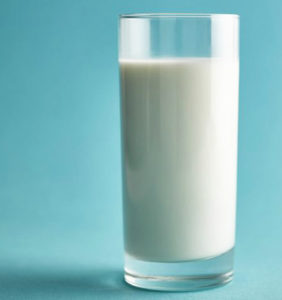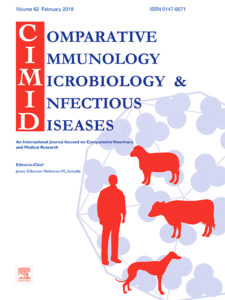MAP SURVIVES TEEWURST DURING SAUSAGE PRODUCTION
2019-05-01 13:54:47 Teewurst is a traditional raw spreadable sausage of German origin that can be prepared from pork, beef as well as poultry meat. It has a short ripening process (1–5 days) at high humidity and relatively high moisture content. Even if no additional sugar and starter cultures are added, the final pH value drops below 5.2 which should ensure microbiological safety of the product. However, the results of a study (in press) reported by Alena Lorencova et al. from the Food and Feed Safety Department, Veterinary Research Institute, Brno, Czech Republic in the journal Meat Science demonstrated that the production process was not effective at inactivating MAP. Despite a significant decline during storage, viable MAP cells were present in teewurst for up to 4 weeks after production.
Teewurst is a traditional raw spreadable sausage of German origin that can be prepared from pork, beef as well as poultry meat. It has a short ripening process (1–5 days) at high humidity and relatively high moisture content. Even if no additional sugar and starter cultures are added, the final pH value drops below 5.2 which should ensure microbiological safety of the product. However, the results of a study (in press) reported by Alena Lorencova et al. from the Food and Feed Safety Department, Veterinary Research Institute, Brno, Czech Republic in the journal Meat Science demonstrated that the production process was not effective at inactivating MAP. Despite a significant decline during storage, viable MAP cells were present in teewurst for up to 4 weeks after production.
In contrast to teewurst, no viable MAP were recovered during the dry fermented sausage production process. The effect of starter culture (Lactobacillus sp. and Staphylococcus sp.), and lower moisture content, may have played roles in the inhibition of MAP. Starter cultures are necessary for fermentation and contribute to the sausage acidification and color and flavor development.
For more on the many kinds of sausages available worldwide, visit Wikipedia.
Comment: This study was NOT a survey of retail sausages. Rather, it was a laboratory experiment using MAP-spiked meat to prepare sausage and study MAP survival. The study yet again proves that MAP is very hardy. It does not indicate that MAP is in retail teewurst. Prior publications from this research team have documented MAP DNA in retail sausages but found no viable MAP using culture methods.
COMPARISON OF ANALYTICAL METHODS FOR MAP IN MILK
2019-04-27 15:41:43 S. Butot from the Nestlé Institute of Food Safety & Analytical Sciences, Nestlé Research Center, Lausanne, Switzerland together with 9 other colleagues evaluated multiple methods for detection of MAP in milk. Their findings were published in the Open Access journal Frontiers in Microbiology, March 15, 2019.
S. Butot from the Nestlé Institute of Food Safety & Analytical Sciences, Nestlé Research Center, Lausanne, Switzerland together with 9 other colleagues evaluated multiple methods for detection of MAP in milk. Their findings were published in the Open Access journal Frontiers in Microbiology, March 15, 2019.
Three different milk matrices were used in the study: heat-treated milk (four sources), milk powder (five sources), and raw milk (four sources). Considering all matrices, different sensitivities, expressed as the percentage of positives from the total of true positive test portions, were obtained for IS900 qPCR (94%), f57 qPCR (76%), culture (83%), and PMS-phage (40%).
They conclude that qPCR and culture are the most appropriate methods to detect MAP in milk-based matrices according to ISO 16140 methodology. Cultural techniques are considered the gold standard for detection of viable MAP, but qPCR, which is widely used in analytical and surveillance studies, can be considered a suitable and recommendable alternative to cultural methods for screening, if confirmation of MAP’s viability is not requested.
JOHNE'S DISEASE IN EGYPTIAN DAIRY CATTLE
2019-04-15 18:46:40 This research publication is noteworthy because of the paucity of reports on Johne's disease in Egypt. It also is one of the few recent papers to report clinical hematology and chemistry studies in conjunction with diagnostics for Johne's disease.
This research publication is noteworthy because of the paucity of reports on Johne's disease in Egypt. It also is one of the few recent papers to report clinical hematology and chemistry studies in conjunction with diagnostics for Johne's disease.
This study diagnosed Johne's disease in dairy cattle by ELISA. 17 cows were ELISA-positive and had persistent diarrhea. 45 cows were ELISA-positive but clinically normal. 138 cows were ELISA-negative and clinically normal; 15 of these cows were used as controls. Clinical hematology and chemistry parameters were compared for these 3 groups of cattle. The study found significantly lower RBCs (red blood cell numbers), PCV (packed cell volume), total serum protein, serum globulin and serum glucose. No significant differences in oxidative stress markers were found for the 17 clinically affected cows.
Typical colonies of MAP (IS900 PCR-confirmed) were isolated from the fecal samples of clinically affected cows. Phylogenetic analysis of these isolates revealed high similarities with MAP strains from both India and Egypt. This study highlights that MAP infections affect dairy farms in Egypt.
This publication by Ahmed Abdelaal et al., appears in the Solvenian Veterinary Research Journal volume 56 (Suppl 22): 421–431, 2019. This is an Open Access journal. As their policy states: This journal provides immediate open access to its content on the principle that making research freely available to the public supports a greater global exchange of knowledge.
EPIDEMIOLOGY OF PARATUBERCULOSIS
2019-04-09 15:18:50 A review of the epidemiology of paratuberculosis was published in two parts by Dr. Conor McAloon et al. in the April 2019 issue of The Veterinary Journal. Unfortunately the articles are not Open Access, meaning you must pay a fee to gain access to the full article unless your institution subscribes to the journal.
A review of the epidemiology of paratuberculosis was published in two parts by Dr. Conor McAloon et al. in the April 2019 issue of The Veterinary Journal. Unfortunately the articles are not Open Access, meaning you must pay a fee to gain access to the full article unless your institution subscribes to the journal.
Dr. McAloon works in the Section of Herd Health and Animal Husbandry, School of Veterinary Medicine, University College Dublin, Ireland. He recently received his PhD and is one of the promising new young scientists in the field of paratuberculosis research. The reviews come from his thesis and are published in two parts: Part 1 concerns broader aspects of epidemiology of paratuberculosis, and Part 2 concerns on-farm control of paratuberculosis. Both are excellent and provide the most comprehensive and current information on the subject.
Epidemiology is a topic under each of the main animal species covered on this website. For example this link takes you to the epidemiology of Johne's disease in dairy cattle: Dairy cattle/Epidemiology
POSITION: JOHNE'S DISEASE PROGRAMME MANAGER - IRELAND
2019-03-28 15:32:57 The establishment of the Irish Johne’s Control Programme (IJCP) has been led by AHI in conjunction with industry stakeholders. Following a previous pilot programme, Phase One of the IJCP was launched in late 2017 as a voluntary national programme for the dairy sector. The (IJCP) is a long term programme for the control of Johne’s disease and recognises the value of effective and on-going disease prevention and containment practices to control the infection. The IJCP provides pathways for test-negative and test-positive herds to demonstrate progress towards an improved herd assurance for Johne’s disease, while also improving calf health and biosecurity and providing market assurance.
The establishment of the Irish Johne’s Control Programme (IJCP) has been led by AHI in conjunction with industry stakeholders. Following a previous pilot programme, Phase One of the IJCP was launched in late 2017 as a voluntary national programme for the dairy sector. The (IJCP) is a long term programme for the control of Johne’s disease and recognises the value of effective and on-going disease prevention and containment practices to control the infection. The IJCP provides pathways for test-negative and test-positive herds to demonstrate progress towards an improved herd assurance for Johne’s disease, while also improving calf health and biosecurity and providing market assurance.
Further details of the IJCP are available at www.animalhealthireland.ie. Phase Two of the IJCP began in January 2019, with the ambition of achieving a significant level of engagement with dairy herds in the near future. Due to retirement, a vacancy has arisen for a programme manager to oversee the continued development of the IJCP. Reporting directly to the CEO, the successful candidate will have responsibility for all aspects of the IJCP, building on the significant progress made to date.
Link to full position announcement: Johne's Disease Programme Manager-Animal Health Ireland-2019
WHY DON’T MORE DAIRY PRODUCERS PARTICIPATE IN JD CONTROL PROGRAMS?
2019-03-21 20:06:41 RESEARCH ARTICLE
RESEARCH ARTICLE
Veterinary researchers in Ontario Canada worked to answer this question and published their findings in the Journal of Dairy Science (online 07-MAR-2019).
ABSTRACT: Motivating uptake of management change recommendations requires knowledge of the barriers and motivators influencing producer behavior. This study investigated dairy producers' and veterinarians' perceptions of the barriers and motivators influencing the adoption of Johne's disease (JD) control recommendations in Ontario, Canada. Eight focus groups, 6 with dairy producers and 2 with veterinarians, were conducted and thematically analyzed. Both producer and veterinarian groups identified physical resources (i.e., time, money, infrastructure) and producer mindset (i.e., perceived priority of JD, perceived practicality of JD control recommendations) as key barriers to adoption. Producers tended to prioritize JD control on their farm based on their lived experiences with JD and their view of the public's concern about JD. Many agreed that JD recommendations should focus on biosecurity more holistically and emphasize the broader health benefits of limiting calf exposure to many fecal–orally transmitted diseases. Producers also highlighted that some recommendations for on-farm change (i.e., keeping a closed herd, buying from low-risk herds) were unrealistic or too difficult to perform and often disrupted their habits or routine. In contrast, veterinarians suggested that most recommendations were practical and are routinely recommended. Participants suggested both extrinsic (i.e., incentives, premiums, penalties and regulations, and extension and communication) and intrinsic (i.e., pride and responsibility) methods for motivating producers. This study highlights the importance of producer mindset in on-farm change and offers insights into the attitudes and perceived barriers influencing on-farm change.
COMMENT: When dairy producers are asked to shoulder 100% of the costs of a JD control program and receive no compensation for their time and effort or for the costs of making management changes and herd testing, producer adoption of JD control programs will likely remain very low. If dairy processors would incentivize dairy producers by paying more for milk from test-negative herds, the raw milk supply would eventually harbor fewer MAP and consumers would be better protected from MAP in dairy products. It’s that simple: Money motivates.
DAM-DAUGHTER MAP INFECTION ASSOCIATION
2019-03-18 17:04:01 Research Article
Research Article
PREFACE:
Should I cull the off-spring of an ELISA-positive cow?
This is one of the more common questions asked of veterinarians regarding Johne's disease control programs. Today's news item is about research done in the UK targeted specifically at this question for dairy cattle.
ABSTRACT: A longitudinal study was carried out following a cohort of 440 UK dairy cows in 6 herds recruited in 2012-2013. Individuals entering the milking herd were routinely monitored for the presence of MAP using quarterly milk ELISA testing. The relationship between time until first detection of infection and dam MAP status was investigated. Dam test status for MAP was found to be the only observed factor that was significantly associated with time to an individual testing MAP-positive (p = 0.012). When compared to test-negative dams, these UK scientists found a marginally significant effect of having a positive dam at time of calving, that increased the hazard of an individual testing positive by a factor of 2.6 (95% confidence interval: 0.89–7.79, p = 0.081). Further positive associations were found with dams becoming positive after the birth of the subject; a dam seroconverting within 12 months post parturition being associated with a 3.6 fold increase in hazard (95% confidence interval: 1.32–9.77, p = 0.013), and dams seroconverting more than a year after calving increased the hazard by a factor of 2.8 (95% confidence interval: 1.39–5.76, p = 0.004). These results suggest that cows may be transmitting MAP to their offspring at an earlier stage than had previously been thought, and so raise important questions about how this transmission may be occurring. The results of the study may have important practical implications for the management on-farm of the offspring of MAP-positive animals, with the potential to vastly reduce the time required to eliminate this chronic disease.
This link takes you to the full article, however, it is not Open Access.
CONCLUSION: The answer to the off-spring culling question for commercial diary herds is yes (in most instances). It is better to retain as herd replacements only those animals born to tested-negative dams and dams that remain test-negative. Of course, each dairy is unique and for animals with high genetic merit alternatives to culling might be considered. These findings are most relevant to dairy cattle herd controlling Johne's disease by testing cattle using the milk ELISA and animal husbandry conditions in the common in the UK.
COMPARATIVE PATHOBIOLOGY OF IBD AND PTB
2019-03-11 17:22:29 Scientific Review Article
Scientific Review Article
Scientists in Spain have published a novel and comprehensive comparison of diseases that are considered "chronic regional intestinal inflammatory diseases" (CRIID), with paratuberculosis being a prototype. This review contrasts the nature of pathology seen in humans, nonhuman primates and 13 other animal species or types of animals with excellent color photomicrographs illustrating the pathology seen with MAP infections in cattle. It also tabulates the history of these diseases from 1502 to the present, the epidemiology of CRIID and affect of therapeutics. The review lists 151 references.
Although written for the technical specialist, especially pathologists, it is an excellent concise review of the subject that may help lead to a more informed discussion on the role of MAP in many forms of inflammatory bowel conditions. This article was published in the journal Comparative Immunology, Microbiology and Infectious Diseases (volume 62, pages 88-100, February, 2019).
Note: It is well known that all ruminants are susceptible to MAP infection. Our website has a special page for teh NON-ruminants that have been shown to be MAP-infected. Check it out here!
RISK ASSESSMENTS APP
2019-02-12 17:36:11 Risk assessments are the foundation of Johne’s control programs. They assist herd owners develop management plans to minimize risks for MAP introduction and spread in their herd. The risk assessment and management plan (RAMP), prioritize management changes to insure herd owners focus on making changes in herd management that maximize efforts to control Johne’s disease.
Risk assessments are the foundation of Johne’s control programs. They assist herd owners develop management plans to minimize risks for MAP introduction and spread in their herd. The risk assessment and management plan (RAMP), prioritize management changes to insure herd owners focus on making changes in herd management that maximize efforts to control Johne’s disease.
The University of Wisconsin School of Veterinary Medicine has converted the traditional paper RAMP designed for us in the U.S. into an App that speeds the process, makes it paperless, and even allows for submission of the complete RAMP to both the animal owner and the state official charged with monitoring Johne’s control programs directly from the App. The RAMP App is designed for both dairy and beef herds, but owners of other animals can use the same principles for their herd or flock.
The Johne’s RAMP App is one of 15 such Apps for iPads developed by the Production Medicine unit of the UW School of Veterinary Medicine for dairy herd health monitoring. Click here to see the full list.
More about RAMPs for dairy herds can be found at this link.
More about RAMPS for beef herd can be found at this link.
This is a direct link to the iTunes App store to obtain the JD Risk Assessor.
PHASE 2 OF THE UK NATIONAL MANAGEMENT PLAN DELIVERING EFFECTIVE FARMER ENGAGEMENT
2019-02-06 17:45:01 Program status report
Program status report
The UK has developed a commercially driven framework for the control of Johne’s disease in dairy herds. The program started in 2010 with a prolonged education program to secure farmer and veterinarian engagement and has now in the second year of an exciting phase where farmers and vets work together to develop a written agreed plan of action to manage JD effectively.
The program is managed by the Action Group on Johne’s , which brings together all relevant industry organizations that have an interest in managing Johne’s, including vets, labs, farmers’ unions and milk processors.
6 control strategies have been defined by the group and over 1,153 veterinarians have completed online training and certification allowing them to deliver the program.
Each farmer must work with their accredited Johne’s vet to conduct a risk assessment, undertake surveillance to assess the status of the herd and define an agreed control plan from one of the six strategies available.
The farmer pays for any testing and consultancy advice, the milk processor encourages or in some cases insists on compliance and the vet works with the farmer to reduce the incidence of disease and signs a certificate of compliance which is returned to the processor for collation. There is no subsidy for testing or veterinary work.
20 milk processors are members of the NJMP representing 64% of Great Britain’s milk supply. 16 processors have achieved 90% compliance and 10 have achieved 100% compliance. 56% of the UK milk supply are effectively assured by the framework. It is estimated a further 20% of UK farmers have a robust plan in place however their processor may not choose to be a member of the program.
For more details of the program visit Action Johne’s.
« Previous 1 … 14 15 16 17 18 Next »